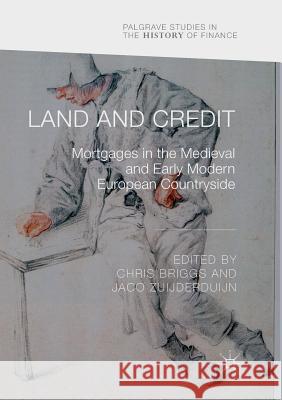Land and Credit: Mortgages in the Medieval and Early Modern European Countryside » książka
topmenu
Land and Credit: Mortgages in the Medieval and Early Modern European Countryside
ISBN-13: 9783030097639 / Angielski / Miękka / 2019 / 339 str.
Kategorie:
Kategorie BISAC:
Wydawca:
Palgrave MacMillan
Seria wydawnicza:
Język:
Angielski
ISBN-13:
9783030097639
Rok wydania:
2019
Wydanie:
Softcover Repri
Ilość stron:
339
Waga:
0.43 kg
Wymiary:
21.01 x 14.81 x 1.91
Oprawa:
Miękka
Wolumenów:
01
Dodatkowe informacje:
Wydanie ilustrowane











